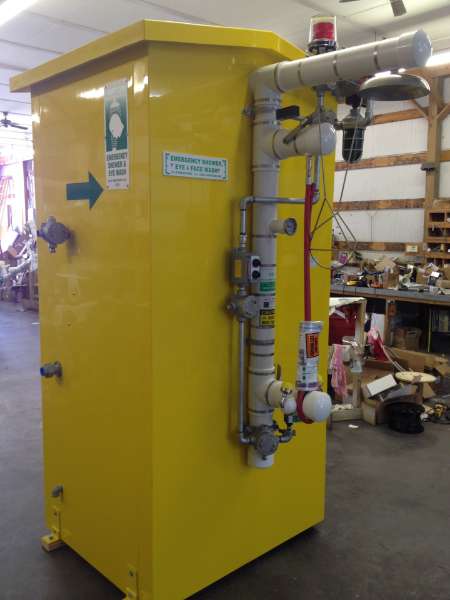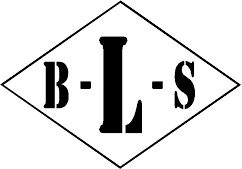Essential Emergency Shower Equipment for Industrial Facilities

Proper safety measures cannot be overstated in industrial environments where workers are exposed to hazardous chemicals, extreme heat, or airborne contaminants. One of the most critical elements in ensuring workplace safety is having effective emergency shower equipment in place. These systems are designed to provide immediate decontamination, minimize injury, and potentially save lives.
What Equipment is Needed for an Emergency Shower?
Industrial facilities must be equipped with specific safety equipment that can quickly and efficiently wash away hazardous substances from the body and eyes. The goal is to minimize damage and increase the likelihood of recovery in the event of exposure.
Essential Components of an Emergency Shower
While the specific configuration may vary depending on your facility’s risks and layout, every emergency shower station should include the following core elements:
- Emergency Drench Shower: A full-body shower capable of delivering a high flow of tepid water for at least 15 minutes. These units are often floor-mounted or wall-mounted and should be easy to activate in one step.
- Eye and Face Wash Stations: Designed to flush hazardous substances from the eyes and face, these units provide a gentle stream of water and should allow hands-free operation once activated.
- Combination Units: These systems include both a full-body drench shower and an eye/face wash station, offering comprehensive decontamination options in one location.
- Heated Shower Enclosures: In colder climates, water temperature is a concern. Heated enclosures prevent freezing and ensure that water remains in the ANSI-specified “tepid” range (60°F to 100°F).
- Flow Regulators and Valves: Ensure the correct water pressure and distribution across all outlets. Quick-opening valves allow water flow in less than one second and remain open without the user needing to hold it.
- Drainage Systems: Emergency showers discharge large amounts of water rapidly. Proper drainage prevents secondary hazards like slipping or flooding.
- Alarm and Monitoring Systems: Alarms or signal beacons can alert supervisors when a shower is activated. Monitoring systems track usage for maintenance and compliance documentation.
These components must be durable, corrosion-resistant, and capable of performing reliably in various industrial conditions. Stainless steel and galvanized steel are popular materials used in high-quality systems like those offered by B-L-S Industries, Inc.
Ensuring Compliance with OSHA and ANSI Standards
Installing emergency shower equipment is not just a best practice—it’s a legal requirement for many facilities. Compliance ensures the health of workers and protects companies from fines or liability.
OSHA Requirements
The Occupational Safety and Health Administration (OSHA) enforces general guidelines under standard 29 CFR 1910.151(c), which states:
“Where the eyes or body of any person may be exposed to injurious corrosive materials, suitable facilities for quick drenching or flushing of the eyes and body shall be provided within the work area for immediate emergency use.”
Though OSHA does not prescribe exact equipment specifications, it defers to ANSI standards to determine what qualifies as “suitable facilities.”
ANSI/ISEA Z358.1-2014 Standard
The American National Standards Institute (ANSI) developed Z358.1-2014, the definitive guideline for emergency eyewash and shower equipment. Key requirements include:
- Location: Units must be within a 10-second reach (~55 feet) of potential hazards, unobstructed, and on the same level.
- Water Temperature: Must deliver tepid water (60–100°F). Heated units or tempering valves may be required.
- Water Flow: Drench showers should deliver at least 20 gallons per minute (GPM) for 15 minutes; eyewash stations should deliver 0.4 GPM minimum.
- Activation: Equipment must activate in one second or less and remain operational without the user needing to hold a valve open.
- Signage: Clear, visible signs must mark the equipment, and the area should be well lit.
- Testing: Weekly activation tests and annual performance evaluations are mandatory.
Common Compliance Mistakes
Failure to meet compliance standards can jeopardize worker safety and lead to penalties. Some of the most frequent issues include:
- Blocked access to units due to stored materials or clutter.
- Inadequate water temperature, especially in unheated environments.
- Insufficient water pressure or volume, rendering units ineffective.
- Lack of regular testing, leading to non-functional valves or nozzles.
- Improper placement, such as units being too far from the hazard or located upstairs/downstairs.
Routine inspections and partnering with a trusted manufacturer like B-L-S Industries, Inc. help eliminate these problems before they lead to serious consequences.
Upgrading Emergency Shower Systems
As technology evolves and regulations are updated, facilities must also modernize their safety infrastructure to stay ahead of hazards and remain compliant. Upgrading emergency shower equipment isn’t just about replacing old hardware—it’s about enhancing the overall emergency response strategy.
How to Optimize Water Flow & Pressure
Optimal water flow is critical for effective decontamination. Inadequate pressure may result in insufficient rinsing, increasing the risk of chemical burns or prolonged exposure.
To optimize performance:
- Install Pressure Regulators: These maintain a consistent and safe pressure level across showers and eyewash units.
- Use Flow Restrictors and Laminar Flow Nozzles: These improve coverage and comfort while preventing splashing.
- Check Water Supply Lines: Ensure that pipes are properly sized and free of obstructions. Undersized lines may not deliver the required GPM.
- Integrate Booster Pumps: Facilities with low municipal pressure can benefit from pumps that ensure ANSI compliance.
Modern systems often include built-in sensors to monitor flow rate and usage, allowing for predictive maintenance and real-time alerts.
Benefits of Heated Shower Enclosures
In colder environments or outdoor installations, unheated units may become unusable due to freezing water lines. Heated emergency shower enclosures solve this problem by maintaining a tepid water supply and protecting both equipment and users from cold-related stress.
Advantages include:
- Guaranteed usability year-round
- ANSI-compliant water temperature delivery
- Employee comfort, reducing shock or hypothermia risks
- Prevention of frozen pipes and cracked fittings
B-L-S Industries, Inc. offers heated enclosures specifically designed for harsh environments, ensuring uninterrupted safety coverage.
Smart Monitoring & IoT Integration
For advanced facilities, integrating Internet of Things (IoT) capabilities can provide:
- Usage logs for safety audits
- Maintenance reminders
- Alerts when units are triggered
- Water quality monitoring
These features not only support compliance efforts but also demonstrate a company’s commitment to cutting-edge safety protocols.
Why Choose B-L-S Industries, Inc.?
Since 1976, B-L-S Industries, Inc. has been at the forefront of emergency shower equipment innovation and manufacturing. Based in Carl Junction, Missouri, we understand the needs of American industries and have built our reputation on quality, reliability, and compliance.
What Sets Us Apart?
- Unmatched Experience: Over four decades of hands-on expertise in safety systems.
- Diverse Product Range: From basic eyewash units to fully customized, climate-controlled shower stations.
- Engineering-Grade Design: Built to endure the toughest industrial environments.
- Compliance-Ready Systems: All equipment meets or exceeds ANSI/ISEA Z358.1 standards.
- Customization Services: Tailored solutions for facilities with unique spatial or hazard considerations.
- Local Support: Prompt customer service and support from our U.S.-based team.
Whether you’re retrofitting an aging system or designing a new facility, B-L-S Industries, Inc. has the equipment and engineering insight to meet your exact needs.
Final Thoughts
In hazardous environments, every second counts. When a worker is exposed to dangerous chemicals or contaminants, having reliable and properly installed emergency shower equipment can make all the difference. From full-body drench systems to combination eye and face wash units, the right setup is essential for effective emergency response.
Facilities must ensure that their systems function as intended and comply with OSHA and ANSI standards. Regular maintenance, strategic upgrades, and flow optimization all play critical roles in safety assurance.
Ready to Upgrade Your Emergency Shower Systems?
If you’re evaluating your facility’s safety infrastructure, don’t leave it to chance. At B-L-S Industries, Inc., we’re more than just a supplier—we’re your safety partner. From standard units to fully customized solutions, we provide top-tier emergency drench showers, eye wash stations, and heated enclosures that exceed compliance standards and deliver peace of mind.
Contact us today to explore our product line or request a custom quote. Let our experienced team help you build a safer, more compliant workplace—because when it comes to safety, only the best will do.
